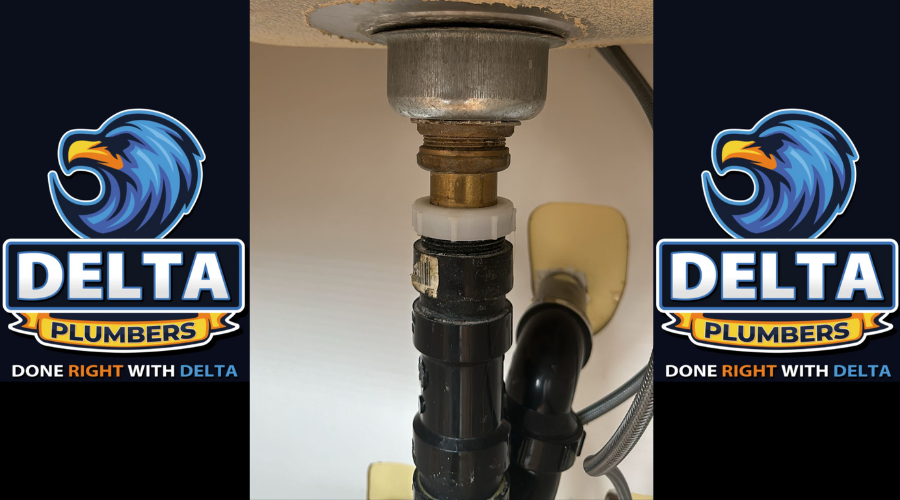Hidden water leaks are among the most dangerous and deceptive threats homeowners face. Unlike a burst pipe or a dripping faucet, these leaks often remain unnoticed for weeks, months, or even years, slowly eroding your home’s foundation, promoting mould growth, and inflating your utility bills. Because these leaks occur behind walls, under floors, in ceilings, or underground, they don’t always show immediate signs. Unfortunately, by the time visible symptoms emerge, the damage is often extensive and expensive.
For homeowners in Ontario and across Canada, where seasonal temperature swings, soil movement, and aging infrastructure increase the risk of plumbing issues, knowing how to detect and deal with hidden water leaks is crucial. Whether you’re dealing with strange odours, unexplained water stains, or a sudden spike in your water bill, taking prompt action can save your home—and your health.
In this comprehensive guide by Delta Plumbers, we explore the key questions homeowners have about hidden water leaks. From how professionals find them to how they can affect your health, we’ll uncover everything you need to know to protect your property and your peace of mind.

Picture Source – Delta Plumbers
How Do Plumbers Detect Hidden Leaks?
Water leaks that remain unnoticed can silently compromise a home’s structural integrity, increase utility bills, and lead to serious health concerns. That’s why professional leak detection is crucial. While DIY methods may help in obvious cases, hidden water leaks require professional tools and expertise to diagnose accurately.
Acoustic Listening Equipment
Plumbers frequently use acoustic devices to identify the sound of water escaping under pressure. These devices pick up the subtle frequencies made by water leaking from pipes, especially under slabs or behind drywall. A trained plumber can distinguish between normal water flow and a problematic hiss or trickle that points to a leak.
Thermal Imaging Cameras
Water alters the temperature of surfaces it saturates. Infrared thermal cameras detect these temperature anomalies, allowing plumbers to scan large areas like ceilings, floors, and walls without damaging them. A cold patch in a warm wall, for example, may indicate moisture accumulation.
Moisture Detection Tools
When a leak goes undetected, it soaks building materials over time. Moisture meters help plumbers measure the saturation level inside wood, drywall, or concrete, often pinpointing the leak’s location even before mould becomes visible.
Pressure Testing
Plumbers may perform hydrostatic or pressure tests on your plumbing system. By isolating segments and checking for pressure drops, they can narrow down which zone has a leak and estimate the size or severity of the issue.
Video Inspection Tools
For underground or hard-to-access pipes, pipe inspection cameras are inserted into drains and water lines. These flexible cameras transmit real-time video, letting plumbers see hairline cracks, root invasions, or corroded sections causing leaks.
Tracer Gas Technology
In sensitive areas like hospitals or high-rise buildings, plumbers may use non-toxic tracer gas like hydrogen or nitrogen to find the smallest leaks. Once introduced into the system, the gas escapes through the leak point, and a sensitive sniffer tool detects its exit path.
The combination of non-invasive tools and expert training makes modern leak detection faster, more accurate, and less damaging to homes and properties.
Also Read: Common DIY Plumbing Mistakes That Cost You More

Picture Source – Delta Plumbers
How Long Can a Water Leak Go Undetected?
A hidden water leak can go unnoticed for weeks, months, or even years, depending on its location, flow rate, and how observant the homeowner is. Small pinhole leaks behind walls or in basements may not present immediate signs, making them particularly dangerous over time.
Factors Affecting Detection Time
- Location: A leak under a concrete slab or behind tiled walls is much harder to detect than one under a sink.
- Leak Rate: A slow drip may evaporate faster than it accumulates, especially in warmer or well-ventilated spaces.
- Homeowner Awareness: People who don’t monitor their water bills or inspect their homes regularly may miss early warning signs.
Subtle Signs That Take Time to Notice
Many leaks only become obvious once secondary issues appear:
- Discoloration or stains on ceilings
- Warped or bubbling paint
- Musty odours from mildew
- Cracking drywall or baseboards
- Increased water bills
It’s not uncommon for homeowners to discover a leak only after thousands of dollars in damage has occurred. This is why regular inspections and preventive maintenance are vital, especially in older homes or homes with shifting foundations.
Hidden Leaks That Can Last for Years
Leaks inside crawl spaces, within wall cavities, or below outdoor irrigation systems can last years without detection. Over time, these leaks contribute to structural rot, pest infestations, and even foundation damage. A leak that goes unnoticed for an extended period may also void home insurance policies due to negligence.
In summary, a leak can hide for a long time, but the longer it stays undetected, the more costly and dangerous it becomes.
Also Read: How to Tell if You Need a Drain Pipe Replacement

Picture Source – Delta Plumbers
Can a Water Leak Make You Sick?
Yes — a hidden water leak can directly impact your health, often without you realizing the connection. From mould spores to bacterial growth and even exposure to structural contaminants, the consequences of moisture intrusion can be severe.
Mold Exposure
When water accumulates behind walls or under floors, it creates the perfect environment for mould and mildew to thrive. Spores released by mould can cause:
- Allergies and asthma flare-ups
- Sinus infections
- Eye, nose, and throat irritation
- Skin rashes
People with compromised immune systems or respiratory conditions are particularly vulnerable. Even healthy individuals may develop symptoms with prolonged exposure.
Bacteria and Pathogens
Standing water from leaks can become a breeding ground for bacteria, viruses, and even parasites. This is especially dangerous if the leak involves greywater (from sinks/showers) or worse, blackwater (sewage). Pathogens from such leaks can cause:
- Gastrointestinal infections
- Hepatitis
- Skin infections
Structural Contaminants
Leaking water can leach chemicals from drywall, insulation, flooring glue, or even old lead pipes. Long-term exposure to these toxins can contribute to:
- Neurological issues
- Hormonal imbalances
- Chronic fatigue
In short, even a minor leak left unchecked can create a toxic indoor environment. The hidden nature of the leak means people often ignore symptoms or misattribute them, allowing the problem to worsen.
Also Read: Bathroom Plumbing Upgrades That Add Real Value to Your Home

Picture Source – Delta Plumbers
How to Figure Out Where a Leak Is Coming From?
Identifying the source of a water leak is crucial to mitigating damage and reducing repair costs. Even if signs like stains or mould are present, the actual leak may originate several feet away. Here’s how homeowners — and professionals — isolate the source.
Start With Visual Inspection
Look for the following:
- Water stains or damp spots on walls or ceilings
- Bubbling paint or wallpaper
- Warped wood or laminate flooring
- Pooling water under sinks or near appliances
- Sagging ceilings
Always check both above and below the affected area — a leak on an upper floor may manifest downstairs.
Turn Off Fixtures
Shut off your toilets, faucets, washing machines, and dishwashers one by one to isolate the source. If a leak stops after a particular appliance is shut off, that’s your culprit.
Check the Water Meter
Turn off all water usage in your home and monitor the water meter. If it continues to tick forward, you likely have a hidden leak. This method confirms a leak’s presence even if you can’t yet see physical signs.
Use Colored Dye or Food Coloring
For toilet leaks, place a few drops of food colouring in the tank. If the colour appears in the bowl without flushing, the toilet is leaking internally.
Inspect the Yard
Water-saturated patches of grass or erosion near the foundation can indicate a buried leak in outdoor pipes or irrigation systems.
Call a Plumber for Advanced Testing
When DIY efforts fall short, call a licensed plumber. They’ll bring the tools to:
- Conduct pressure tests
- Use infrared imaging
- Perform camera inspections
Pinpointing the leak is essential because repairing the wrong section of piping can lead to wasted money and further complications.
Also Read: Prepare Your Plumbing for Ontario’s Summer Storms

Picture Source – Delta Plumbers
Is There a Device to Detect Water Leaks Underground?
Yes — technology has evolved to make detecting underground water leaks both possible and precise. These specialized tools help plumbers avoid excavation or property damage during leak detection.
Electromagnetic Pipe Locators
These devices trace the exact route of buried pipes, making it easier to focus detection efforts. Knowing where the pipe runs helps avoid unnecessary digging.
Acoustic Ground Microphones
Plumbers use ground microphones to listen for the sound of water escaping underground. These high-sensitivity devices pick up vibrations from leaks several feet below the surface.
Leak Correlators
These are high-tech devices used on larger-scale water systems like city mains. Leak correlators use sensors placed at two access points along the pipeline. They analyze how long sound waves take to travel from the leak to each sensor to calculate the exact location.
Infrared and Thermal Scanners
While typically more useful for above-ground leaks, some thermal cameras can help spot underground leaks close to the surface, especially if the surrounding soil shows heat anomalies.
Tracer Gas Detection
For extremely small or elusive leaks, plumbers may use non-toxic tracer gas pumped into the water system. The gas escapes through the leak, and its presence is detected above ground using specialized sensors.
Modern leak detection is a far cry from guesswork. With the right tools, underground leaks can be found with minimal disruption, saving homeowners thousands in excavation and repair costs.
Also Read: Maintain Your Home’s Sewer Line and Avoid Costly Repairs: How to Do It

Picture Source – Delta Plumbers
How Long Does It Take for Mould to Grow After a Water Leak?
Mould can begin growing within 24 to 48 hours of a water leak. The speed depends on temperature, humidity, and airflow in the affected area. Once established, mould spreads quickly and becomes increasingly difficult to remove.
Growth Timeline
- 0–24 Hours: Surfaces begin absorbing water; materials like drywall and insulation become moist.
- 24–48 Hours: Mould spores germinate and begin forming colonies in damp areas.
- 72 Hours+: Spores begin to spread into the air, creating a risk for respiratory problems.
Mould doesn’t just grow on surfaces; it can develop inside HVAC systems, insulation, carpeting, and subflooring, especially if the leak is not fully dried.
Ideal Conditions for Mould
Mould thrives in:
- Humidity levels above 60%
- Temperatures between 77–86°F (25–30°C)
- Low ventilation areas
That’s why basements, attics, and wall voids are common breeding grounds. If water remains trapped behind a wall or under flooring, mould colonies will expand aggressively.
Health and Structural Impact
Mould causes:
- Persistent coughing
- Sneezing and sinus congestion
- Eye and skin irritation
- Headaches
- Asthma attacks
It also eats away at wood, glue, and paper-based products, weakening floor joists, drywall, and ceiling tiles over time.
Once mould takes hold, cleanup becomes a significant project involving the removal of affected materials, HEPA filtration, and antimicrobial treatments.
Also Read: Professional Faucet Repair is Better Than DIY Solutions: Why?

Picture Source – Delta Plumbers
Is It Safe to Sleep in a Room with a Water Leak?
Sleeping in a room with an active water leak is not recommended, and in many cases, it may be unsafe. The risk depends on the source of the leak, duration, and whether mould or electrical hazards are present.
Health Hazards
Leaking water promotes the growth of mould and mildew, which release spores into the air. When inhaled, these spores can:
- Trigger allergies
- Aggravate asthma
- Cause skin rashes and headaches
- Increase susceptibility to infections
For infants, seniors, or immunocompromised individuals, even short-term exposure can be dangerous.
Structural Risks
Water leaks can weaken the structure above or below your sleeping area. For example:
- Ceiling leaks may result in sudden collapse
- Floor damage can lead to sagging or structural failure
- Wet drywall can fall without warning
If the leak has reached ceiling fixtures or electrical outlets, there is also a risk of electrical shock or fire.
Air Quality and Insomnia
Musty odours, damp bedding, or the sound of dripping water can disturb sleep, contributing to stress, fatigue, and poor air quality. Long-term sleep disruption has its own set of health consequences.
What to Do
- Do not sleep in the affected room until the leak is fully repaired and the area is dried and dehumidified.
- Run a HEPA air purifier to reduce spore concentration.
- Inspect electrical wiring in the affected area.
It’s always better to be cautious — sleep in another room and call a professional plumber immediately.
Conclusion
Water is essential to life, but when it leaks where it shouldn’t, it can quietly cause destruction, sickness, and financial hardship. Hidden water leaks are notorious for their ability to damage homes without immediate signs, making regular inspections and quick action necessary. Whether it’s a slow drip behind your wall or a pipe leaking under your concrete slab, the consequences of ignoring the issue can be severe, ranging from toxic mould exposure to dangerous structural compromise.
Fortunately, today’s plumbing technologies, paired with experienced professionals like Delta Plumbers, offer non-invasive and accurate leak detection solutions that protect your property and health. From acoustic sensors and thermal cameras to moisture meters and tracer gas, our experts can locate even the most elusive leaks with pinpoint accuracy.
Remember, early detection is the best prevention. If you notice signs like mould growth, strange odours, stained ceilings, or sudden water bill spikes, don’t wait—contact a licensed plumber right away. With the right response, you can avoid major repairs, safeguard your family’s well-being, and ensure the long-term health of your home.









